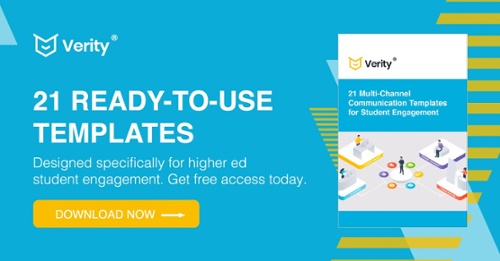STIR/SHAKEN: How Higher Ed Can Benefit from FCC Changes to Cold Calls
Outbound calling to prospects and responding to inquiries used to be much simpler until recent years. The adoption of dialers and technology made it easy for abuse and bad actors to reach far and wide. SPAM calling has simply destroyed trust and reputation, which in turn has had an impact on answer rates.
Technology adoption has enabled from one salesperson placing several calls a day, to automated systems making calls by the thousands, also known as robocalling. Robocalling became easier and easier, which meant any business could do it – even the more disreputable ones…
Which brings us to where we are today. Robocalling has become something the public is taking note of, and their complaints have reached the ears of major organizations like Verizon, AT&T, T-Mobile, and even the FCC. As a result, these organizations have taken steps to get robocalling and abuse under control so legitimate use can eventually regain trust. After all, dialers can be an effective tool for trusted use cases.
The Robocall Problem
The robocall problem is one of excess; according to USA Today, Americans received 58.5 billion robocalls in 2019 alone. While many of those calls came from upstanding businesses looking for new customers, many others came from scammers looking to take advantage of unsuspecting individuals.
Unfortunately, these scammers are astoundingly successful. Data from Truecaller suggests that Americans lost nearly $9 billion from phone scams in 2018, with many of these victims being elderly men and women. A large part of the problem is the existence of local presence dialing: a program that uses available numbers in local area codes to trick callers into answering. It is becoming a noticeable pattern.

With robocalling – and particularly scam robocalling – on the rise across the country, the FCC and major phone companies are taking steps to mitigate this problem. Their fix has been to flag any calls from auto-dialing software as “SPAM-possible.” This sends the call straight to voicemail or triggers a “spam warning” on the user’s phone so they know not to answer.
The FCC’s solution will certainly help alleviate the risk of Americans falling for spam calls – but it also makes it harder for legitimate businesses to reach their target audience. Luckily, there is a way to make sure your calls get through to your audience: STIR/SHAKEN.
Understanding STIR/SHAKEN
STIR/SHAKEN stands for the Secure Telephone Identity Revisited (STIR) and Signature-based Handling of Asserted Information Using toKENs (SHAKEN) standards.
These are a new set of standards the FCC uses to verify phone numbers from interconnected networks (in use by CRMs or auto-dialing programs). The phone carrier “signs off” on phone numbers to prove their legitimacy, and this “signature” Is verified and validated during the calling process.
With STIR/SHAKEN, consumers receive verification the phone number on their caller ID is in fact the number where the call originated. This makes it more difficult for spammers to use local presence dialing to “spoof” numbers and increase their answer rates. Additionally, the STIR/SHAKEN standards help legitimate businesses maintain their credibility even when conducting outbound calls.
How SHAKEN/STIR Can Help Higher Ed Institutions
With STIR/SHAKEN, your school can enjoy increased answer rates, gain credibility, and consumers who are much happier to receive your call. Ultimately, this will result in better answer rates for your business. Here are the steps you can take to make sure you take advantage of these features.
Basic Implementation
- If telephony is built-in with your CRM, ask the provider if they have implemented STIR/SHAKEN
- With STIR/SHAKEN implemented, the provider will provide attestation level and certify the call
- Make sure your provider also sends CNAM (caller id) to represent the name of your school
- The student or prospect should now see the inbound call as verified and include the name and verified number of the school

Advanced Implementation
With a more advanced implementation the CRM and telephony provider can send additional information with the call to supported devices.
- Branding elements such as logo, background color and font can be added to the call
- Reason for call, such as a summary one line text like “calling to confirm your appointment”
By implementing and using these guidelines it is easy to see how this can restore trust and increase answer rates. Branded calls can have a powerful impact on establishing initial trust with prospects and students. You can finally leverage your brand with phone calls.


